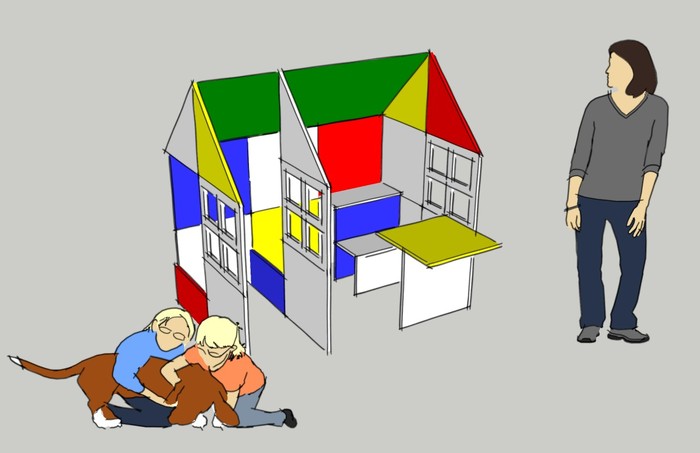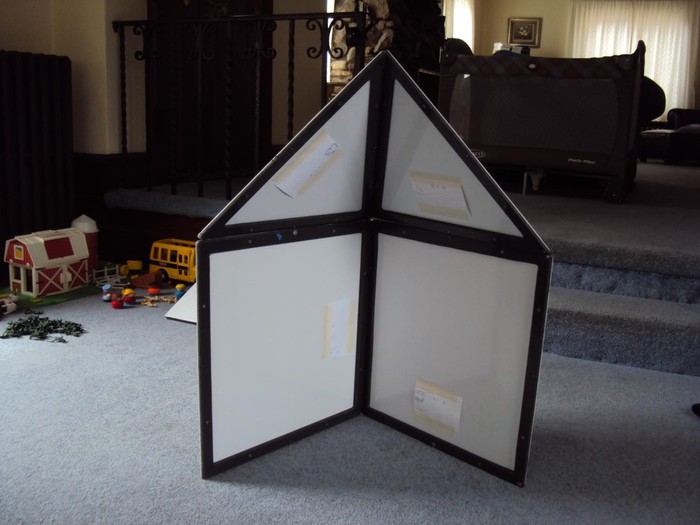Your Cart
Panelcraft offers the world’s first and only premium quality magnetic construction sets. Our products come with curriculum to teach PreK-6 students in the areas of Science, Technology, Engineering, Art, Math (STEAM), and even literacy! Whether you are starting STEM or STEAM in your school/organization, or looking for an amazing educational building toy, we have a product for you.
Vision Statement
Our vision is to be the world's best magnetic construction toy company.
Mission Statement
Our mission is to design, manufacture, market and sell the world's best and only premium-quality magnetic construction toys in order to empower children to design, build and explore their world. To do this, we support organizations where children play with the highest quality products, educational materials, and services.
History
Panelcraft originated from co-founder, Chad Richert's dissatisfaction with construction toys he had experienced at children's museums. During family visits he noticed it was usually the parents that did the constructing while the children stood and watched, due to the complexity of the assembly system. Other construction toys he had seen seemed cheaply made and were disappointing to use. As an architect it felt natural for him to design a better system, however he was unable to create a fastening system that was simple enough for children to use until one day Jeff Whittaker introduced him to a bookcase he had designed in which all of the fasteners had been substituted with magnets.


First prototype made from plywood.
From this, they decided to make a lighter version with spherical magnets that rotated in corner sockets. This idea was different enough from any other magnetic toy that they decided to file for a patent. The second prototype was a clear improvement. However, making the panels one at a time from sheets of PVC plastic was extremely labor intensive, so they decided to create a still further improved third generation design taking advantage of all of the benefits of plastic injection molding techniques.


2015 marked important milestones for Panelcraft such as the creation of the colorful Dream Builder and Earth tone sets which were picked up by major catalogs for the early learning markets in the US and Canada. In December of 2015 Panelcraft was featured on the DIY Network's "I Want That".
As 2016 began, Panelcraft came full circle by opening a major construction exhibit in the Impression 5 Science Center in Lansing, Michigan. This 380 piece exhibit employs the new Rainbow colored sets, and Chad Richert is finally satisfied with the quality found in a museum's construction toy!
By 2017, in order to extend the Panelcraft domain of STEM learning into the highly important areas of computer science and robotics, Panelcraft started research on a new version of its magnetic blocks that could convey electricity in a way that young children could safely explore and learn principles of electronics, robotics and coding. This smaller circuit-building version of Panelcraft became known as Magcircuits. Although the Covid 19 pandemic slowed the development of Magcircuits due to disruptions in the sourcing of key electronic components such as circuit boards, by September of 2022 Magcircuits were exhibited for the first time at the ASTC conference in Pittsburgh.

Attendees were amazed and delighted at how simple, fun and easy learning principles of electronics, robotics and coding had become. Production of Magcircuits is currently underway with building sets slated to be available in January of 2023!
Jeff Whittaker (left);
earned his Master’s Degree in Interdisciplinary Technology from Eastern Michigan University, and is the inventor/founder of Spider Climbing Inc. magnetic climbing system. He is also the former head of the Dearborn Center for Math, Science, and Technology, and is the inventor of the magnetic fastening system of Panelcraft.
Chad Richert (Right);
earned his Master’s Degree in Architecture from the University of Michigan, and heads both the Architecture and Energy Technology Departments at Henry Ford College. His Life-long interest in how children learn, play, and interact with the spaces around them lead him to initially design the Panelcraft concept for his two young children.
